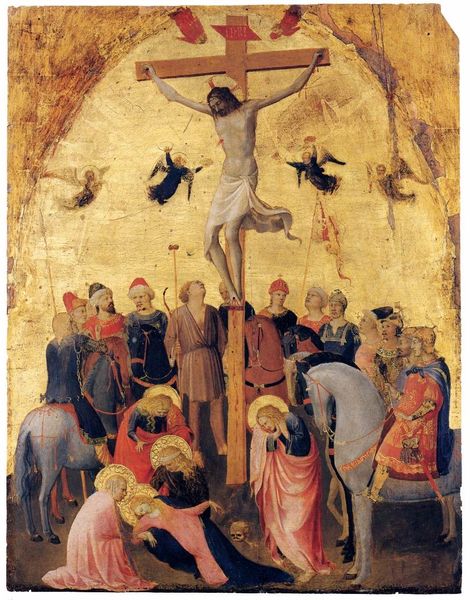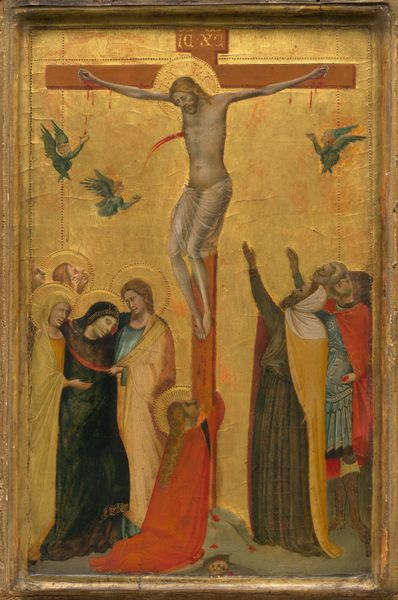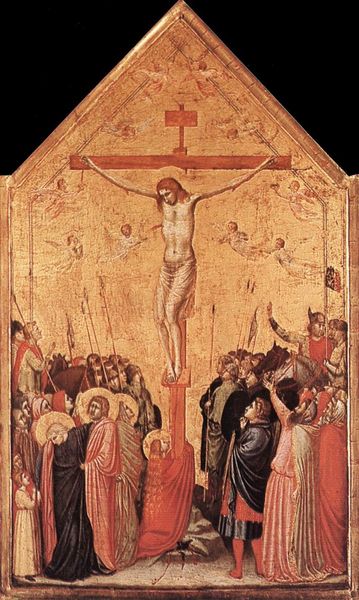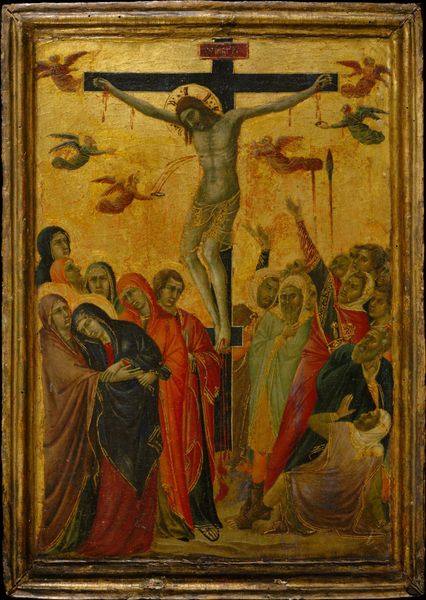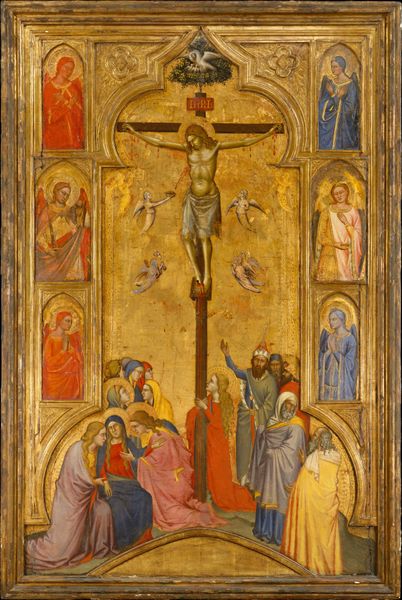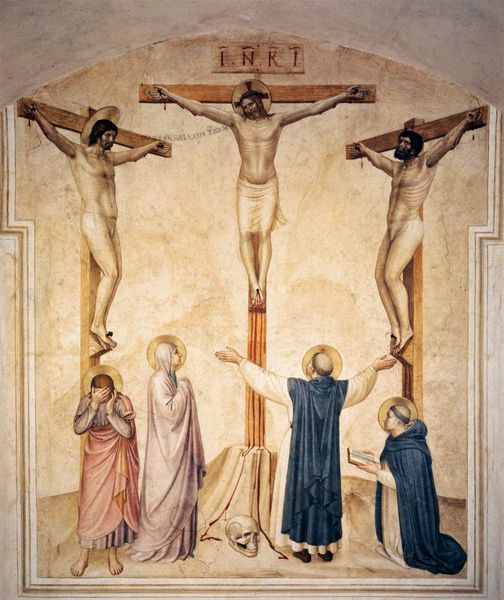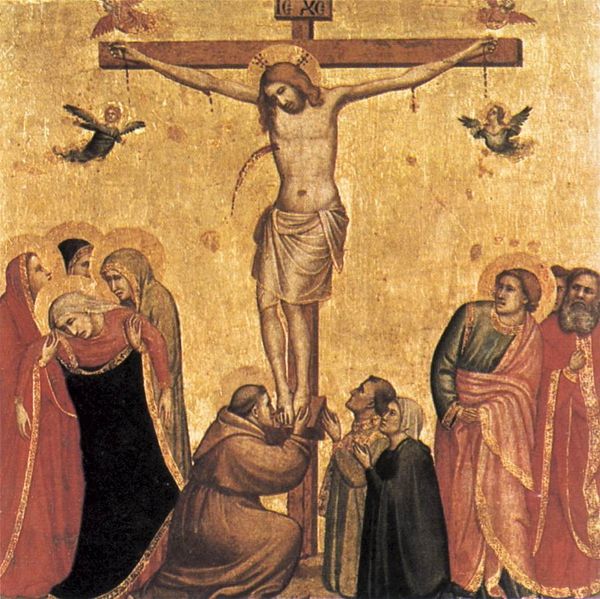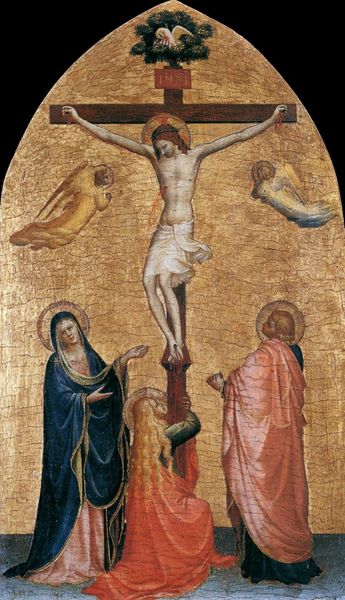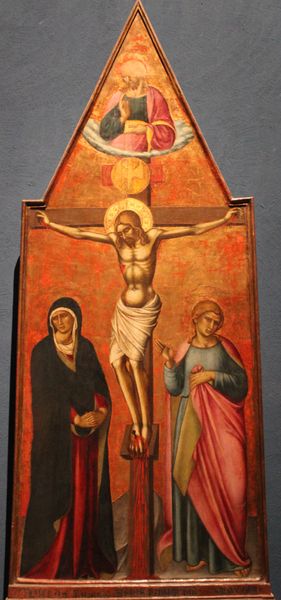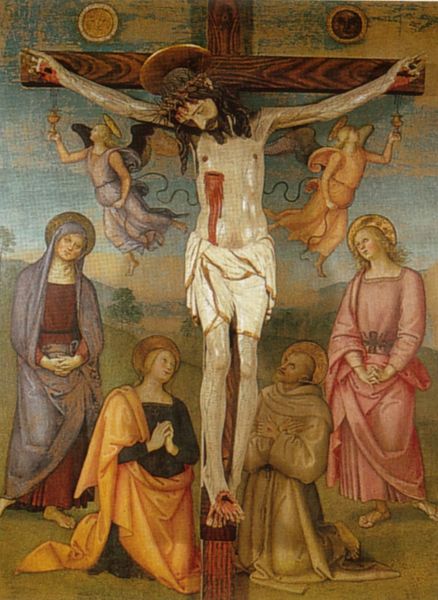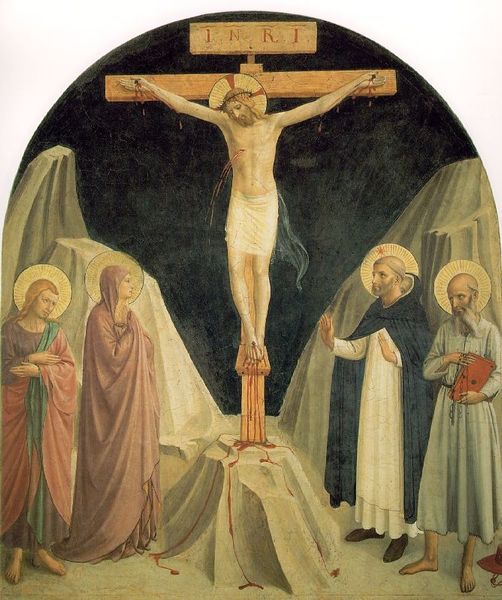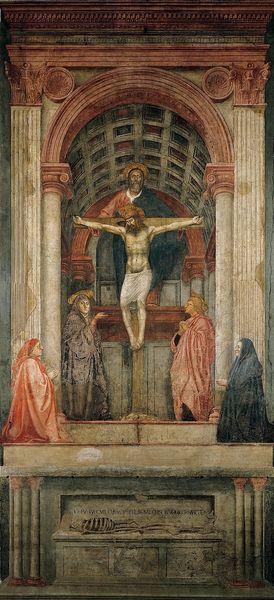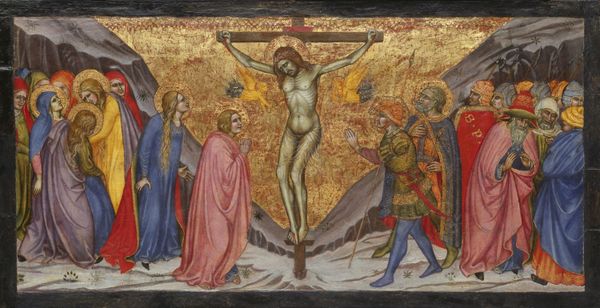
tempera, painting
#
tempera
#
painting
#
figuration
#
oil painting
#
jesus-christ
#
christianity
#
crucifixion
#
history-painting
#
italian-renaissance
#
early-renaissance
Copyright: Public domain
Editor: So, this is Giotto's "Crucifixion," made around 1325 with tempera paint. The raw emotion in the figures is striking. It feels much more human than earlier depictions of this scene that I've seen. What historical factors might have influenced Giotto's approach here? Curator: Good observation! Giotto was working during a period of significant social and religious change. The rise of humanism, with its focus on individual experience and earthly life, began to shift artistic focus away from purely symbolic representations. Do you see how he uses composition to amplify this feeling? Editor: I notice how everyone's gaze converges on Christ, making him the focal point but in a very intimate, shared-grief sort of way. And the expressions! They're so individualized, even the angels seem to be weeping. Curator: Precisely. Consider the institutional power of the church at this time and how artists navigated that. Representing grief with such directness, emphasizing human connection to divine suffering… it challenged the established conventions that favored distant, regal portrayals of Christ. Who were Giotto's patrons? And how might that affect this imagery? Editor: I believe it was the Scrovegni family commissioning artwork for the Arena Chapel in Padua. They were wealthy but also seeking to atone for sins, including that of usury, so that emphasis on forgiveness is really interesting in the context of such suffering depicted on the cross. Curator: Exactly! The act of patronage became its own complex performance. The artist, patron, and religious institutions were each influencing how such crucial theological narratives were visually told. How does recognizing this give us insight to its public role and impact? Editor: Thinking about this painting as an event shaped by social forces is really fascinating, moving beyond simply admiring Giotto's artistic skill. It really complicates the way I look at this era! Curator: It certainly moves us beyond a surface reading and helps us to better understand not just the painting itself but the forces that created it.
Comments
No comments
Be the first to comment and join the conversation on the ultimate creative platform.
